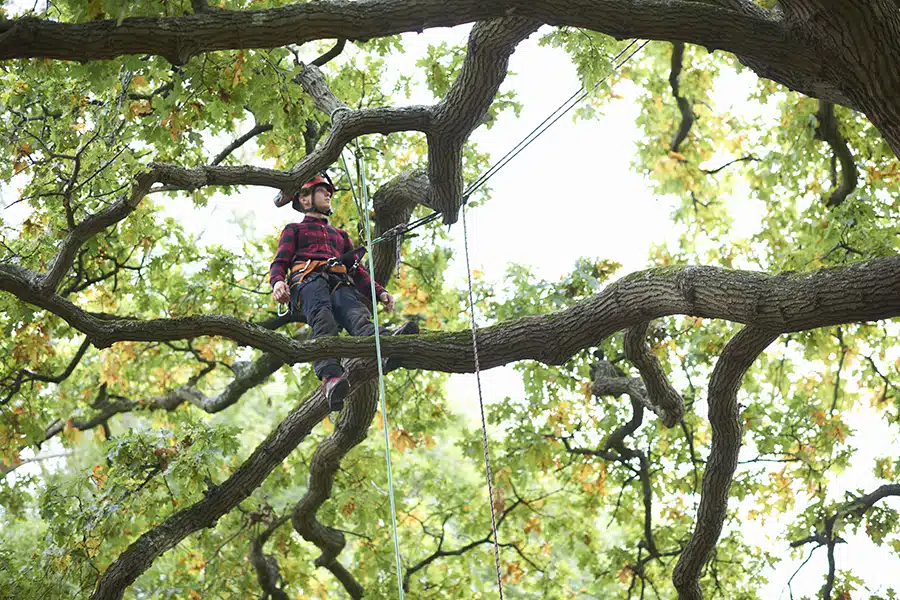Severe weather can wreak havoc on your property, and trees are often among the first to show signs of damage. High winds, heavy rain, snow, or ice can weaken branches, split trunks, or even uproot trees entirely.
While the damage may not always be obvious, failing to trim and assess trees after a storm can lead to serious safety hazards and long-term property issues. Tree trimming is a vital step in post-storm recovery, helping to protect your home, prevent future damage, and maintain healthy landscaping.
Prevents Safety Hazards and Property Damage
Storm-damaged trees can pose an immediate threat to people, pets, and structures.
- Broken or hanging limbs can fall without warning, especially during follow-up storms or windy days.
- Cracked or split branches may remain attached but are structurally compromised and likely to fall.
- Trees leaning after a storm may have damaged root systems that make them unstable.
- Prompt trimming removes dangerous limbs and reduces the risk of injury or damage to homes, vehicles, and power lines.
By addressing storm-related damage quickly, you make your property safer and avoid costly emergency situations later.
Helps Trees Recover and Remain Healthy
Trimming storm-damaged trees supports healing and reduces the chance of disease or decay.
- Removing torn or jagged branches prevents pest infestation and fungal infections.
- Clean cuts made by professionals allow trees to compartmentalize wounds more effectively.
- Thinning overcrowded areas improves airflow and sunlight, promoting overall health.
- Addressing damage early helps preserve the tree’s structure and prevents long-term decline.
Trimming isn’t just about aesthetics—it’s essential for the health and survival of your trees after extreme weather.
Prepares Trees for Future Storms
Proactive trimming after a weather event strengthens trees and helps them withstand future storms.
- Removing weak or overextended limbs reduces wind resistance and lessens the chance of breakage.
- Balancing the canopy helps distribute weight more evenly across the tree’s structure.
- Identifying and removing structurally unsound limbs or co-dominant stems prevents future failures.
- Early intervention builds a more storm-resilient tree that poses less risk over time.
Preparing trees for future storms is one of the best ways to protect your property and preserve valuable landscaping.
Supports Insurance and Liability Claims
Taking quick action with tree trimming can also be important from a legal and financial standpoint.
- Insurance companies may require proof that you maintained your trees responsibly after storm damage.
- Neglecting to trim hazardous limbs could lead to denied claims or shared liability in the event of damage.
- Hiring a certified arborist provides documentation and expert support if issues arise later.
- Keeping trees maintained shows good property stewardship and helps avoid legal disputes with neighbors.
Proper trimming not only protects your property physically,but it also helps you navigate post-storm insurance claims smoothly.
Tree trimming after severe weather is more than just cleanup, it’s a critical step in protecting your home, maintaining healthy trees, and avoiding future risks. By investing in prompt, professional trimming, you ensure that your landscape stays safe, beautiful, and resilient in the face of whatever nature throws your way.

